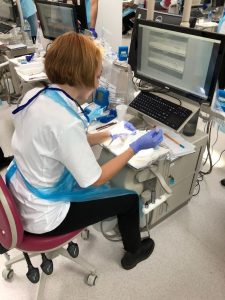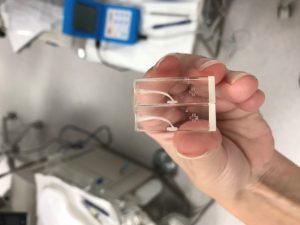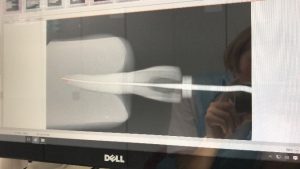Root Canals
By Emma Elliot (3rd year dental student)
I’m currently in my third year of dentistry at Barts and the London. This year so far has been a big step up from the first two years where we had a lot of lectures and only spent one or two days a week learning procedural skills. Now in third year, I treat real patients and have passed exams to allow me to do fillings and treat gum disease. My timetable is hectic; I learn clinical skills on Mondays, have lectures and denture design on Tuesdays, seminars on Wednesdays, treat patients every Thursday and perform extractions on Fridays.
I’m going to focus on Mondays, probably the hardest day of my week. Now that I know how to do fillings, the clinical skills day has moved on to teaching us how to do root canals (or endodontics), one of the longer and more difficult dental procedures. A root canal is exceptionally difficult – you have to successfully remove a bacterially infected pulp and completely seal off the system so bacteria don’t get back in, whilst being unable to see the pulp itself.

I get to the clinical skills lab at 9 a.m. ready for a 9.30 start – you need the extra half an hour to set up your bay and get your equipment out ready for when the tutors to arrive. The dental hospital has around 70 bays for students to work on, mine is Bay 2 and that is where I will sit for the duration of the root canal course. Each bay has a computer that shows what the tutor is doing on their screen and there are speakers in the lab so you can always hear the tutor’s instructions.
Our tutor is a specialist in root canal procedures. The introductory lecture lasts about an hour before we begin working, this gives us time to query things we don’t understand. In the first few weeks we worked on ‘endo blocks’, small glass cubes that mimic the root canal system (pulp) of a real tooth – see picture below. This allowed us to see what we were doing while we get used to the procedure.


This week is different however, we have begun working on real human teeth that have been extracted. This means we have to be especially careful about cross infection control (wearing gloves, aprons, masks, glasses and disinfecting the bay) as we don’t know the medical history of the person our teeth came from. Once the tutor has finished her demonstration we are free to work the whole day, getting marked at certain steps and asking for guidance if we get stuck. The procedure is relatively simple:
- Measure the length of the pulp system
- Drill into the tooth and find the pulp
- Remove 2/3rd of the pulp with a ‘drill’
- Remove the last 1/3rd of the pulp with small files that you keep in a blue sponge to stop you accidentally scratching yourself
- Constantly ‘wash’ the pulp with chemicals to kill the bacteria
- Seal it up
As simple as that may sound, you cannot see a single thing you are doing so you must take X-rays and constant measurements to make sure you are in the right area and doing the right thing. Doing steps 1 to 6 currently takes me 5 hours and by the time I qualify the NHS specifies the procedure should take around 45 minutes so I have a long way to go!
My day in the clinical skills lab finishes at 4.30p.m, by which time I’ve worked on the same tooth for about 6 hours. I pack up my bay and put my work for the day in a bag marked with my name and group number, ready to pick up again next Monday and add to my portfolio of worked teeth. This is one of my hardest days, but also one of the most satisfying when I get it right.
